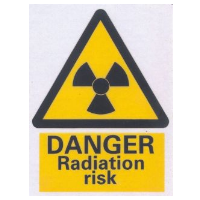L.A. Gets Fitted for a Nuclear Halo by Homeland Security

A controversial federal program to secure cities against the threat of nuclear terrorism, conceived in the Bush administration, is ramping up its activities in the Los Angeles/Long Beach region.
L.A. Mayor Eric Garcetti announced last week that the city had received an $11.4 million grant to create what he called a “detection halo” that would provide an early warning of impending doom. The program, administered by the Domestic Nuclear Detection Office (DNDO), utilizes sensor equipment, communications infrastructure and special training to attain what some skeptics think is unattainable—security in an insecure world.
The office was created within the Department of Homeland Security (DHS) in April 2005. A year later, the office introduced the “Securing the Cities” pilot program in New York City. In the program’s first expansion beyond New York, the Los Angeles/Long Beach area received a $1 million grant and $500,000 in training support from the federal government in October 2012 to develop what the office calls “a region-wide, robust nuclear detection capability.”
DNDO has come under fire over the years for its failure to develop the Advanced Spectroscopic Portals (ASP), a system of radiation detection devices meant to scan activities at ports around the nation. ASP was meant to replace scanners already in use at ports and border crossings which couldn’t tell harmless commodities, such as kitty litter, from uranium-filled devices.
The new L.A. grant expands a program that almost died in New York. A few years after New York began testing and deploying equipment to detect nuclear materials within the city limits, the Washington Post detailed one of its abject failures when a helicopter with ultra-sensitive radiation detection equipment attached to its tail buzzed Lower Manhattan block by block:
“The 30-minute training exercise failed to detect a deliberately planted chunk of radioactive cesium-137, a material that—if dispersed by an explosive—could paralyze the nation's financial nerve center. With time running short, police operators blamed technical glitches, and the pilot turned back to a West Side landing pad.”
Critics of the program argued that their really was no evidence of an urban nuclear threat and that development of the technology to detect such a threat may not be possible. They also warned of interagency operational limitations across a multi-jurisdictional region.
In May 2009, at the start of the Obama administration, DHS Director Janet Napolitano recommended the program be cut from the budget. Representative Peter King (R-New York) jousted with Napolitano at a hearing before the House Homeland Security Committee, arguing that the program was critical to the security of New York City and the nation. Napolitano wanted to know why, if it was that important, New York officials hadn’t completed their application for 2009 fiscal year funds.
Despite attempts to cut Securing the Cities funding in 2009 and 2010, Congress finally made the pilot program permanent and increased its funding in 2011. That year, New York ran a five-day mock dirty bomb exercise. A dirty bomb is a theoretical device that combines radioactive material and conventional explosives.
A flotilla of law enforcement vessels with detection equipment hunted down a small fishing boat loaded with radioactive material at the mouth of New York Harbor. Officers armed with radiation detection devices from each of the city’s 76 precincts gathered at the United Nations for a briefing on a fake missing van, possibly with stolen radioactive material. Counter-terrorism checkpoints were set up at five bridges in the Bronx.
Some observers wondered if the time and effort at detection might better be applied to figuring out how the city would respond if the bomb were actually triggered. The 2013 DHS budget summary (pdf) noted that 6,000 pieces of radiological detection equipment had been deployed in New York and 11,000 personnel had been trained in preventive operations.
In L.A., several agencies will get a piece of the action, including: the Los Angeles Police and Fire Departments; airport and harbor police; the Los Angeles County Sheriff’s Department, public health departments; Long Beach police; the Orange County Sheriff’s Department; and California Highway Patrol.
–Ken Broder
To Learn More:
The City of Angels to Get a Nuclear Halo (by Marielle Wakim, Los Angeles Magazine)
Los Angeles to Build $11 Million Nuclear-Detection System (Public CEO)
King Fights to Continue NYC Nuclear Detection (by Mickey McCarter, Homeland Security Today)
Securing the Cities No Easy Task (by Spencer S. Hsu, Washington Post)
- Top Stories
- Controversies
- Where is the Money Going?
- California and the Nation
- Appointments and Resignations
- Unusual News
- Latest News
- California Forbids U.S. Immigration Agents from Pretending to be Police
- California Lawmakers Urged to Strip “Self-Dealing” Tax Board of Its Duties
- Big Oil’s Grip on California
- Santa Cruz Police See Homeland Security Betrayal in Use of Gang Roundup as Cover for Immigration Raid
- Oil Companies Face Deadline to Stop Polluting California Groundwater





